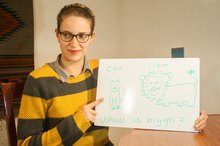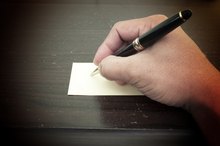Occupational Therapy Activity Ideas for CVA
The mountain of deficits to overcome through occupational therapy after a CVA, also known as a cerebrovascular accident or stroke, can be daunting 1. However, by adding therapeutic activities to your exercise and rehabilitation routine, you can target additional components of deficit as well as focus on your strengthening and range of motion goals. Using these activities can also reveal additional cognitive and visual deficits that may be hindering your patient in her functional independence. And performing these activities successfully will give your patient an increased sense of self esteem and accomplishment that will continue to encourage her in her recovery.
If you are experiencing serious medical symptoms, seek emergency treatment immediately.
Card Sorting
As a precursor to playing cards, challenge your patient to sort a deck of cards. Select oversized cards to accommodate for near sightedness or macular degeneration. Place one card from each house in a row in front of your patient and identify each selection. Place the stack of cards to your patient's unaffected side and instruct him to sort the cards using his strong hand. As he progresses, you can encourage him to use his affected hand. You may need to cue your patient to look to the left side if he has a right brain stroke, as he may have left visual neglect.
- As a precursor to playing cards, challenge your patient to sort a deck of cards.
- Place the stack of cards to your patient's unaffected side and instruct him to sort the cards using his strong hand.
Cones
Gifts for Stroke Victims
Learn More
Modify the traditional cone stacking task for your stroke patient. Place a stack of cones in front of your patient slightly towards the affected side. Instruct your patient to place her affected hand onto the top cone. She may use her unaffected hand to grasp her affected wrist to assist with the task if her affected hand is still significantly weak. Tell your patient to move the top cone towards the unaffected side to start a new stack of cones, moving one cone at a time.
- Modify the traditional cone stacking task for your stroke patient.
- Tell your patient to move the top cone towards the unaffected side to start a new stack of cones, moving one cone at a time.
Beading
Use large, colored wooden beads in several bright colors with a variety of standard shapes such as circle, rectangle and triangle. Using a shoelace to string the beads, tie one bead on the end of the shoelace and hand the lace to your patient. Instruct her to add more beads to the strand to target her fine motor control. Examine and improve sequencing skills by asking your patient to match a pattern card for the sequence of beads.
- Use large, colored wooden beads in several bright colors with a variety of standard shapes such as circle, rectangle and triangle.
- Examine and improve sequencing skills by asking your patient to match a pattern card for the sequence of beads.
Sensation
Occupational Therapy Exercises for Lifting Arms
Learn More
Improve your patient's sensory awareness in his affected hand by an item location activity. Fill a clean coffee can with rice and add common household items such as a bolt, a penny and a clothespin. Use items of various shapes and sizes and keep track of the total number of items you add to the rice. Instruct your patient to place his affected hand into the rice and locate the household items without any assistance or visual help.
- Improve your patient's sensory awareness in his affected hand by an item location activity.
- Instruct your patient to place his affected hand into the rice and locate the household items without any assistance or visual help.
Related Articles
References
Writer Bio
Melissa Sabo is an occupational therapist who started writing professional guidebooks for all Flagship Rehabilitation employees in 2009. Specializing in applied therapy and exercise for non-medical readers, she also coauthored a manual on wheelchair positioning. She graduated from the University of Pittsburgh with a Bachelor of Science in occupational therapy.








